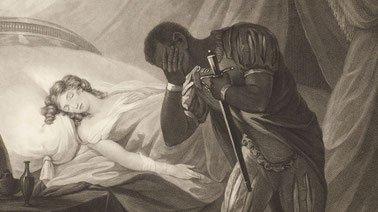MOOC List is learner-supported. When you buy through links on our site, we may earn an affiliate commission.

MOOC List is learner-supported. When you buy through links on our site, we may earn an affiliate commission.
Rather, it is to find a single point of entry to help us think about the play as a whole. Our entry point is storytelling.
We'll look at the ways in which Shakespeare's characters tell stories within the play––about themselves, to themselves, and to each other. We'll consider, too, how actors, directors, composers, and other artists tell stories through Othello in performance. By focusing on storytelling, we can see how the play grapples with larger issues including power, identity, and the boundary between fact and fiction.
From lectures filmed on-location in Venice and conversations with artists, academics, and librarians at Harvard, students will have unprecedented access to a range of resources for "unlocking" Shakespeare's classic play.
This course is part of the Shakespeare’s Outsiders XSeries Program.
What you'll learn
- Develop a critical stance on Othello and its protagonist, the “Moor of Venice,” through the central motif of storytelling.
- Use primary sources, including sixteenth-century accounts of Africa and nineteenth- and twentieth-century performance artifacts, to evaluate the play in multiple historical contexts.
- Looking at adaptations of the play from the nineteenth century to the present, evaluate Othello as a platform for conversations about race, gender, class, and nationality.
Syllabus
Part 1: Story and Identity
In Part 1, we read Acts 1–2, considering the ways in which Othello represents himself to Desdemona and to the Venetian Senate through fantastic tales.
By the end of this unit, you will be able to:
- Analyze Othello’s monologue in Act 1, Scene 3 and use it as a lens through which to view the play as a whole
- Assess the way storytelling is associated with witchcraft, lying, and other subversive behavior, setting up the tragedy of Othello and Desdemona’s relationship
- Understand the historical contexts for Shakespeare’s representations of Othello
- Explore how Shakespeare transformed his sources in creating his character and the play as a whole
Part 2: Story as Fabrication
Part 2 brings us to Acts 3–4, where we see how Iago stages scenes to convince Othello that Desdemona is unfaithful.
By the end of this unit, you will be able to:
- Compare and contrast Othello’s storytelling with Iago’s machinations to sabotage Othello and Desdemona’s relationship, considering the thin line the play draws between fiction and lying
- Use Othello’s monologue in Act 4 to interpret the handkerchief, one of the play’s most central props/symbols
- Evaluate the multiple meanings available in the play’s variant versions and their implications for performance
- Discover how two famous African-American actors, among the first black actors to play Othello, interpreted the play and leveraged it for their own activism
Part 3: Operatic Othellos
Part 3 introduces us to Giuseppe Verdi's Otello and Mehmet Ali Sanlikol's Othello in the Seraglio.
By the end of this unit, you will be able to:
- Delve into the history of operatic adaptations of Othello, beginning with the nineteenth-century Italian composers Verdi and Rossini
- Discover Otello in the Seraglio, which transposes the play to the Ottoman court, revising the “orientalism” of both the play and its operas
- Explore music as a means for telling Othello’s “story,” including representing gender, nationality, and race
- Consider how adaptations bring new meaning to old texts through setting, language, medium, and other artistic choices
Part 4: Revisionist Othellos
In Part 4, we continue our study of Othello's afterlives with Toni Morrison's Desdemona and Keith Hamilton Cobb's American Moor.
By the end of this unit, you will be able to:
- Weigh divergent feminist responses to Othello by Toni Morrison, Djanet Sears, Paula Vogel, and Ann-Marie MacDonald
- Consider how genre becomes a tool for rewriting Othello from a female perspective
- Encounter American Moor, a new play that dramatizes a black actor’s experience auditioning to play Othello
- Evaluate why Othello provides continuing material for engaging issues surrounding race, gender, class, colonialism, and other topics
MOOC List is learner-supported. When you buy through links on our site, we may earn an affiliate commission.
MOOC List is learner-supported. When you buy through links on our site, we may earn an affiliate commission.
